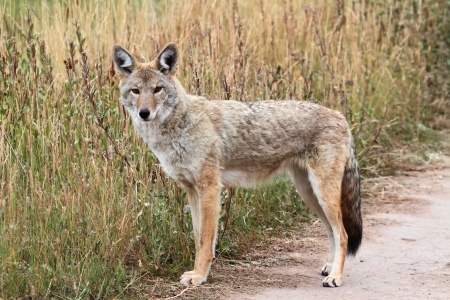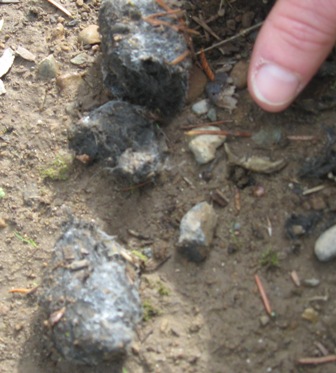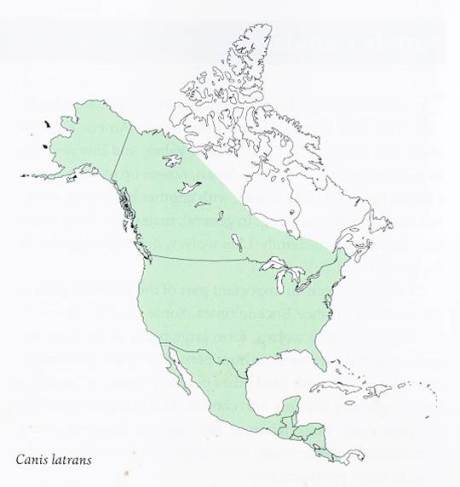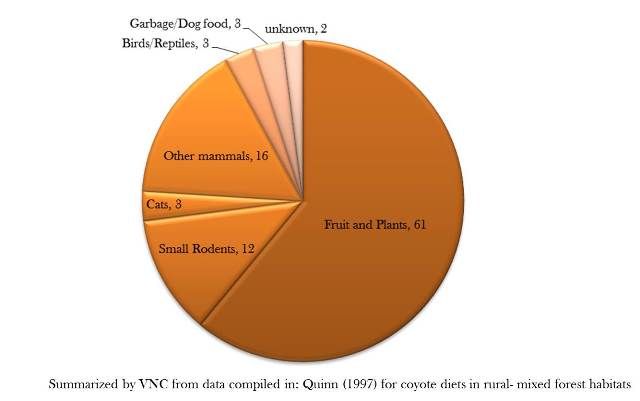“As for the coyote, he was nothing like his cartoon icon. He was sleek, fast, healthy and apparently without an anvil or Acme product of any kind.”
― Doug Fine
Even without anvils and Acme products, coyotes are well adapted to rural environments like Vashon. Unlike their cartoon counterpart, coyotes are naturally shy of people and can bring many benefits to natural ecosystems. However, coyotes can become habituated to humans when they are not treated like wildlife. If they lose their fear, coyotes can become aggressive.
Be a good neighbor to coyotes:
Be big and loud: If you encounter a coyote scare it away. This is the most effective way to keep people, pets, and coyotes safe (recommended hazing techniques).
Do not feed coyotes: This means both actively (please do not set out food for them!) and passively–secure garbage, pets and livestock, pet food, orchards.
Tell others: The tricky thing about living with wildlife is that it takes consistency on the part of the whole community. If you scare coyotes and your neighbor feeds them then all your hard work will be for naught. Please pass along information about living with coyotes to your neighbors and friends. In addition, help us keep track of island coyotes by reporting sightings and howling instances to our wildlife sightings network.
Co-existing with coyotes is possible and not even that hard. For a local example see Lake Forest Park’s wildlife management plan that has been very successful.
City of Lake Forest Park Accepted Wildlife Management Plan
Information pamphlet for pet owners
Active Livestock Management Guide
Vashon Nature Center coyote research program—RESEARCH SNAPSHOT AUG 2016
What are coyotes?
Coyotes are members of the dog family. Coyotes in our area typically range in size from 20-25 pounds and reach about 25 inches tall at the shoulder. This is about the height of a small German shepherd but about half the weight. Recent data collected by VNC and Slater Museum from road-killed coyotes on Vashon shows our coyotes tend to be on the top end of this range (average weight was 25.75 lbs, sample size=3). Their coat colors can vary widely but are usually some form of grey or tan. Occasionally coyotes present as dark morphs (darker brown or black). We have had some sightings of island coyotes that observers report as darker in shade than typical coyotes. We have also had reports of coyotes that are the more standard lighter tan color.
Coyote or dog?
Coyotes have large erect ears, a narrow muzzle, a white or light area under their chins and chests, and a black-tipped tail. Coyotes differ from most dogs in their tail placement. Dogs tend to run with their tails at least slightly up. Coyote tails are bushy and droop behind them as they move.

Copyright: steve_byland / 123RF Stock Photo
Coyote movement looks quite different than dogs. While dogs tend to get distracted and move every which way across a landscape coyotes generally move like they have a mission, in a straight path and with more conserved and more closely contained body movements. People often describe them as gliding across a landscape while domestic dogs tend to romp across a landscape. This can be seen in their tracks as well. Coyote scat is similar to dogs in size but it often has hairs, bones, and sometimes whole chunks of berry or fruit.

This scat, possibly coyote, had tapering ends typical of canids and was full of fur and mice bones (seen just to the left and in front of the human thumb). Seen October 14, 2011 also near Camp Sealth. Photo by: Orion Knowler
America’s song dog: Coyotes have an incredible variety of vocalizations. Dogs typically sound like this . Coyotes sound like this. Unlike humans, coyotes do not harmonize when they howl. This often makes it sound like there are more coyotes than there actually are—3 or 4 coyotes howling can often sound more like 8 or 10. If you were a neighboring pack this would likely deter you from entering enemy territory.
Have you seen a coyote on Vashon or seen coyote scat? Contact us
When did they get here and how?
Coyotes originally inhabited the Southwest and Midwest of the United States. Since the early 1900’s they have undergone a range expansion in all directions. This expansion is likely caused by an increase in open landscapes as forested areas were developed for housing and agriculture, and a decrease in wolf populations (wolves compete with coyotes). Now coyotes can be found along both U.S. coasts, as far north as Alaska and as far south as Costa Rica.
Coyotes have been in King County since the 1930’s. It is hard to say when coyotes first came to Vashon. There is a Beachcomber article in May of 1960 about a coyote killed by a resident on Vashon complete with a photo. There have been anecdotal reports of coyotes being seen on the north end as early as the 1970’s . The first recently confirmed coyote on record was from a road kill incident near the Vashon airport in 2005. The carcass was positively identified as a coyote by T Martino of Wolftown. The first photo of a coyote in Camp Sealth area is from 2011. Since 2011 howls have been heard regularly through out Vashon and Maury Islands and the presence of pups has been confirmed indicating that the islands have a more widespread and established population than in the past.
Coyotes are excellent swimmers and this behavior as well as the waves of sightings from the 1960’s on indicates that coyotes are making it to Vashon much like deer and the occasional bear, by swimming over from the mainland. The most likely source population is the Kitsap Peninsula as the swim across Colvos is the shortest distance. However, genetic testing would be needed to confirm where Vashon coyotes truly come from.
What is the role of coyotes in the ecosystem?
In the presence of wolves coyotes act as secondary predators, in the absence of wolves (as on Vashon) coyotes take on the role of top predators. Because top predators have declined so precipitously in the last century (declines of 95-99% in most regions of the world) we now have very solid documentation on how extremely important top predators are to the functioning of whole ecosystems. Without top predators ecosystems lose species– smaller predators increase in population, and certain prey species can go extinct. As these predator deprived ecosystems get simpler (through species losses) they are then less able to resist and recover from natural disasters and changes. This is what scientists refer to as the trophic cascade effect.
Ecological benefits of coyotes:
Rodent control: Small rodents are the primary food source for most coyotes (Morey et al. 2007). One single coyote can eat up to 1800 rodents a year (Kwong 2014).
More native birds, frogs, lizards and salamanders: When coyotes act as the apex predator in a system, they increase both bird and amphibian populations by suppressing smaller predators that eat them (like cats, foxes, and raccoons). Coyotes suppress these smaller predators in two ways: by eating them, and more frequently, by introducing a fear factor. Raccoons, cats, and foxes tend to be more wary in areas with coyotes. This decreases the time they can devote to hunting birds, frogs, and lizards and sometimes leads them to entirely avoid areas where coyotes occur frequently (Crooks and Soule 1999, Ritchie and Johnson 2009).
Deer control: Island forest and streams have likely suffered an immense amount of pressure from herbivory due to large deer populations. Our forest understories are much simpler (less diversity of native plants) than a typical Pacific Northwest forest understory. Some of this simplicity is likely due to our being an island environment. However, it is almost certain that our exploding deer populations have something to do with this simplification. Although the bulk of coyote diets include smaller items like rodents and fruit, they can occasionally take small or weak deer.
Invasive squirrel control? Vashon Nature Center scientists would like to track the response of the island’s squirrel populations to coyote presence through time. Coyotes do occasionally eat squirrels. We have two types of squirrels on the island, the native douglas squirrel (small reddish, active and highly mobile) and the more bold and aggressive non-native Eastern gray squirrel (grey and large with a big bushy tail). We also have a small chipmunk population that seems to be increasing in recent years. VNC has been receiving more reports of people noticing both Douglas squirrels and chipmunks on their property in recent years, some for the first time in decades. This is a reverse trend from what we were seeing before coyotes were documented on the island in greater numbers (around 2011). While this information is anecdotal it makes us wonder: are coyotes preferentially choosing the louder and larger Eastern grey squirrel as prey, subduing competition with the native Douglas squirrel and allowing the native squirrel population to grow again? Keep track of the ratio of Douglas squirrel observations to Eastern gray observations and record instances of chipmunks on your property to help us understand whether this is really a trend!
What do they eat?
Coyotes are opportunistic feeders and will eat a wide variety of things. This general adaptability in terms of diet is likely a huge factor in their success as a species. Quinn (1997) determined coyote diets from sampling thousands of coyote scat (poop) samples in Western Washington. They looked at three different habitats: urban, rural-agricultural, and rural-mixed forest. Vashon Island habitat and population density is most closely aligned with the author’s rural-mixed forest category (human population density of 111 people/km2 and 70% forest cover on the island). The graph below shows the typical diets of a rural-mixed forest coyote:
In 2015 and 2016, Vashon Nature Center scientists partnered with Slater Natural History museum scientists to collect and categorize scat contents of Vashon Island coyotes. So far we have only completed analysis for 16 different scat samples. The predominant food for island coyotes was vole (95% of scat volume). Fruit, seeds, and raccoon, deer, and gray squirrel hair were also found in the scat samples but at much lower concentrations than in the above pie chart. Often, islands as a whole have higher densities of rodents because there are less natural predators. Could this be why our coyotes are eating so many rodents vs. other options? If so, they could be delivering an essential ecosystem service for our island keeping these populations in check.
How are their populations controlled?
Predation: Coyotes have no predator except humans on Vashon, except for the occasional cougar or bear that swims over. Coyotes will occasionally kill each other in territorial disputes.
Disease: Coyotes suffer from a variety of dog-born diseases like canine distemper, mange, heartworm, and rabies. No coyotes have yet been found to carry rabies in Washington State. Vets tell us that heartworm does not occur on Vashon.
Social pressure: Coyotes exert internal population controls through breeding suppression and territorial defense. In undisturbed coyote populations breeding is highly suppressed. Only one litter of pups is born each year to the alpha (dominant) pair and up to 50% of pups die in the first year. The alpha female and male will mate exclusively for life and suppress breeding in other pack members. If the alpha female or male is killed, pack members may disperse and more breeding will occur as it will no longer be suppressed by the alpha pair. An established pack or pair of coyotes will defend their territory against new coyotes. This is one reason that wildlife managers recommend working with existing coyotes to encourage “good” behaviors. If coyotes are removed new coyotes will move in and human populations and coyotes will have to start all over again to learn how to navigate the same landscape with minimum conflict.
Cars: death by vehicle is reported as the number one cause of death for coyotes in many areas. So far there have been 5 records of death by vehicle on Vashon since 2005 that we know about at Vashon Nature Center. Coyotes on Vashon tend to avoid coming out during parts of the day that humans are most active. This probably contributes to the low death rate by vehicles.
What is it like to be a coyote?
References:
Crooks, KR and M Soule. 1999. Mesopredator release and avifaunal extinctions in an avifaunal system. Nature (400) pp. 563-566.
Kwong, J. 2014. Recreation department conducts training to educate gardeners on coyote behaviors in parks. San Francisco Examiner. March 2014. On-line: http://www.sfexaminer.com/sanfrancisco/recreation-department-conducts-training-to-educate-gardeners-on-coyote-behaviors-in-parks/Content?oid=2742697
Morey PS, Gehse EM, and S Gehrt.2007. Spatial and Temporal variation in the diets of coyotes in the Chicago metropolitan area. Am. Mid. Nat. 158: 147-161.
Quinn, Timothy. 1997. Coyote (Canis latrans) Food Habits in Three Urban Habitat Types of Western Washington. Northwest Science, Vol. 71, No. 1
Ritchie, GE and CN Johnson. 2009. Predator interactions, mesopredator release and biodiversity conservation.
Trauma and social breakdown in large mammals
A note on authorship: These coyote fact pages are the outcome of hard work by a group of island volunteers making up the Coyote Working Group. The purpose of the Coyote Working Group is to provide an on-island resource for everyone on Vashon to learn about coyotes and to help minimize potential conflicts.
featured photo Copyright: mummyhunter / 123RF Stock Photo


